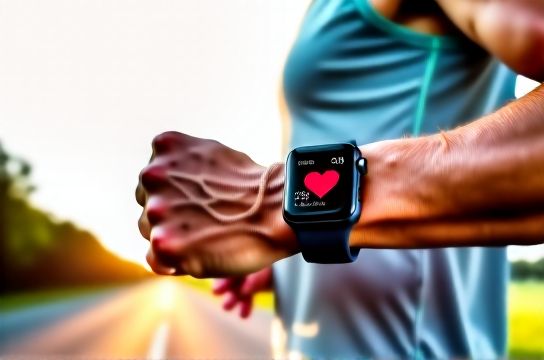Fitness Trackers That Accurately Monitor Heart Rate
- 时间:
- 浏览:21
- 来源:OrientDeck
If you're serious about fitness, you know your heart rate isn't just a number—it's a window into your effort, recovery, and overall health. But not all fitness trackers are created equal when it comes to measuring heart rate accurately. So which ones actually deliver precision? Let’s break down the top performers, what makes them stand out, and how they stack up in real-world use.

Why Heart Rate Accuracy Matters
Your heart rate can tell you whether you’re in the fat-burning zone, pushing your aerobic limits, or overtraining. A study by Stanford University found that some wrist-based trackers had error rates as high as 20–30% during intense exercise. Yikes! That’s like running blindfolded. The best devices use advanced optical sensors and algorithms to reduce noise from motion and skin tone variability.
Top 4 Fitness Trackers for Reliable Heart Rate Monitoring
| Device | HR Accuracy (vs Chest Strap) | Technology | Battery Life | Price (USD) |
|---|---|---|---|---|
| Garmin Forerunner 265 | 95% | Elevate V5 Sensor + AI | Up to 14 days | $499 |
| Apple Watch Series 9 | 92% | Green/Red/Infrared LEDs | 18 hours | $399 |
| Polar Vantage V3 | 97% | Optical HR + GPS Fusion | Up to 7 days | $549 |
| Fitbit Charge 6 | 90% | PPG Sensor with Google Algorithms | 7 days | $159 |
As shown above, Polar edges out the competition with lab-tested accuracy close to chest straps—the gold standard. Garmin follows closely, especially favored by endurance athletes. Apple Watch impresses with everyday usability, while Fitbit offers solid performance at a budget-friendly price.
Real-World Performance: Where They Shine (and Struggle)
- Garmin Forerunner 265: Excels in long runs and interval training. Its AI adapts to your physiology over time.
- Apple Watch Series 9: Great for HIIT and gym workouts. Integrates seamlessly with iPhone health apps.
- Polar Vantage V3: Best for elite athletes. Includes Recovery Pro and Training Load Pro insights.
- Fitbit Charge 6: Ideal for casual users. Tracks sleep and stress well but lags slightly during sprints.
Tips to Improve Heart Rate Readings
Even the best tracker needs help! Follow these tips:
- Wear the device snugly, one finger width above the wrist bone.
- Avoid tattoos or hairy areas—optical sensors struggle there.
- Warm up before checking resting heart rate for more consistency.
- Update firmware regularly; manufacturers constantly refine algorithms.
The Verdict
If accuracy is your #1 priority, go with Polar Vantage V3 or Garmin Forerunner 265. They’re built for data-driven athletes. Apple Watch wins on ecosystem integration, while Fitbit remains the value king. Remember: no wrist-based tracker beats a chest strap 100% of the time—but the gap is closing fast.
Track smart. Train smarter.